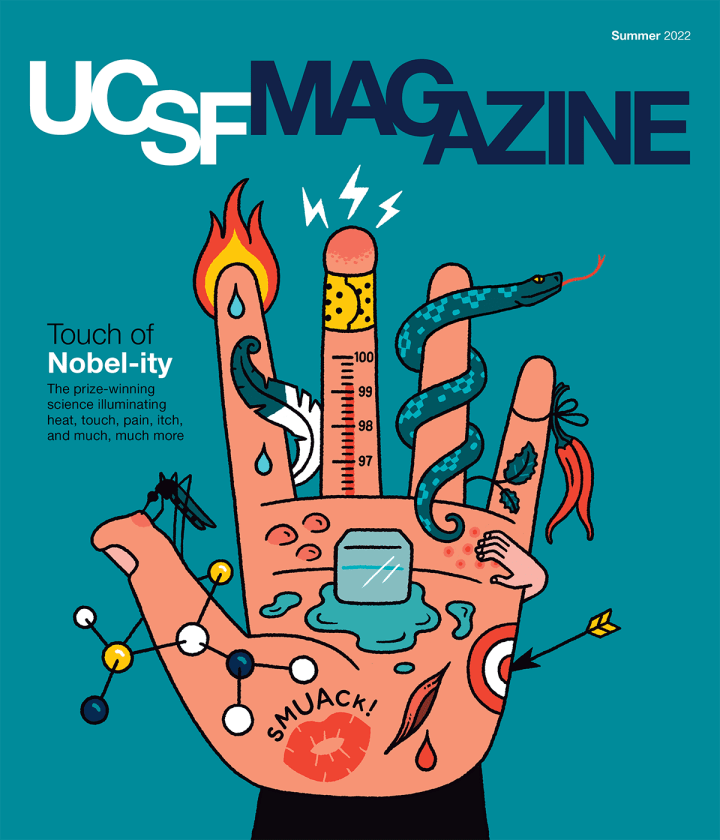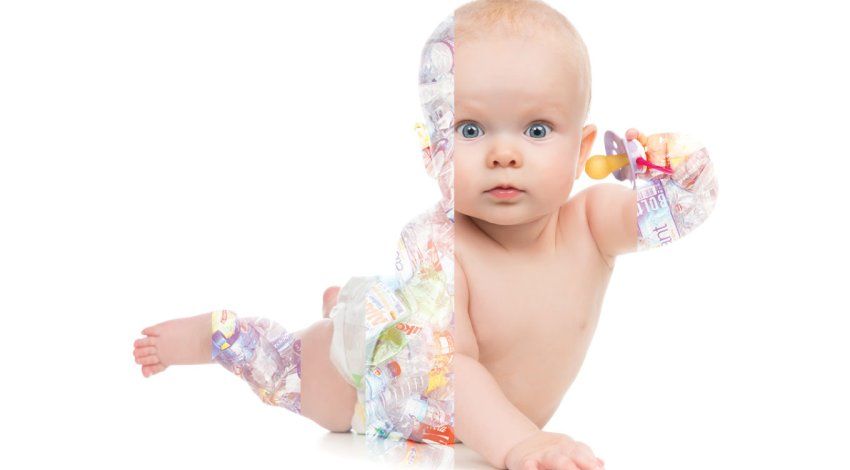
Detoxing: Can You Buy Your Way to Better Health?
Companies claim there’s bad stuff in our homes and bodies, and we should pay to purge it. What’s worth worrying over?
Animation: Farah Hamade
Concerned about cancerous compounds in your lotion? How about air pollution? Or indestructible chemicals in fast-food wrappers? There’s a whole detoxification industry ready to help!
For your body, there’s the $195 Goop 7-Day Reset Kit, which features a vitamin “superpowder” and a dry brush to achieve “rewarding whole-body wellness.” Or you can try “teatoxing”: In 2018, Americans spent more than $62 million on teas that claim to clean you from the inside out. For your home, products like the $320 Blueair Blue Pure 211+ promise to “create the best breathing space possible.” Schools alone have spent millions on air purifiers in response to COVID-19, despite concerns that some devices have created other health hazards.
We asked UCSF experts about “detoxing” and health – and whether there are smarter ways to spend your time and money.
MYTH #1:
I stay inside a lot and use water filters and air purifiers, so I’m super safe.
Nope. To be clear, some of these products perform important jobs. For example, anyone who’s lived through California’s fire season has probably heard of particulate matter: microscopic particles in smoke and other hazy pollution that can find their way into your lungs and even your bloodstream. The health impact of particulate matter can range from coughing to heart problems. The good news: HVAC filters and portable air cleaners can remove a lot of it.
Alas, the bad news: The Environmental Protection Agency estimates that indoor air is two to five times worse than outdoor air – and particulate matter is far from the only pollutant.
For example, your home can easily trap volatile organic compounds (VOCs). You can’t see VOCs, but you might smell them; they have many sources, from paint to perfume. Even new furniture, carpets, and mattresses can release VOCs. Some VOCs, like formaldehyde, increase your odds of getting cancer. More immediate effects can range from headache to memory loss. Unfortunately, many indoor air cleaners don’t remove VOCs. And even among devices that claim to neutralize them, there’s no reliable rating system.
Yikes. So what should we be doing? Prioritizing prevention, according to Tracey Woodruff, PhD ’91, MPH.
“If you can buy it in a store, people assume it’s safe, and that’s not true,” says Woodruff, the Carlson Professor and director of UCSF’s Program on Reproductive Health and the Environment (PRHE). She also directs the UCSF Environmental Research and Translation for Health (EaRTH) Center. “What should we do about these exposures? Systemic change is the most effective approach. In the end, the government needs to do its job. People shouldn’t have to worry about toxic chemicals.”
For example, PRHE researchers studied chemicals used in common plastic items, including baby bottles and food containers. They found that substances like bisphenol A (BPA) can interfere with human hormones and alter a child’s development. Armed with this data, experts from PRHE and elsewhere pushed for better regulation of BPA – and won.
MYTH #2:
Toxic stuff is in my food/home/air/water, but there’s nothing I can do.
Changing government policies can take a long time, but you have options now.
Woodruff’s team put together advice on avoiding harmful chemicals and other environmental health hazards. Among her top tips: Skip harsh cleaning products and opt for milder ones (like diluted vinegar) instead. If it’s got a strong smell, reconsider spraying it in your home and/or on your body. And never microwave anything in a plastic container.
Some of Woodruff’s suggestions require ongoing effort, like following environmental health news and advocating for improved policies. If you find the to-do list daunting, you’re not alone.
“It’s not a sprint, it’s a marathon,” says Woodruff. “You can start making choices and replacing things over time. You shouldn’t take it on all at once.”
What if, despite knowing better, you make a mistake that unleashes VOCs? Let’s say you blast your cat’s litter box with air freshener, or bleach your bathtub, or otherwise behave like a human with hard-to-kick habits. Now what? Open a window. The EPA seconds this strategy for removing indoor air pollution.
As far as your tap water goes, it’s probably safe if you’re in California. But you can visit ewg.org/tapwater to look up your zip code and learn more about water filters.
MYTH #3:
This juice/sauna/colonic is going to cleanse me!
Actually, a healthy body can clear out plenty of problematic stuff without much assistance.
“A lot of the chemicals – like phthalates and BPA – if you just get exposed once, they’ll leave your body in a day or a week,” says Woodruff. “Even mercury – you can stop eating big fish, like tuna, and reduce your mercury by half in about three months.”
But preventing chronic exposure is key. Faced with high levels of harmful substances again and again, your body’s ability to detox declines.
“You have to change your diet and other exposures,” Woodruff says. “Other things, like massage and sweating? I don’t know of scientific evidence that those are effective.”
So what you eat matters. Woodruff recommends fresh, organic fruits and vegetables. If you’re on a tight budget, Amber Smith, MBA, RD, the director of nutrition services at UCSF, suggests buying the “dirty dozen” – produce easily penetrated by pesticides, like strawberries, leafy greens, and tomatoes – organic. The origins of your onions and pineapples don’t merit as much concern.
Smith says if someone eats a lot of processed foods, a “detox” diet filled with fruits and vegetables might help them feel healthier – say, more energetic. But she has warnings. Make sure a dietician endorses the meal plan. Don’t severely restrict calories and protein, or you’ll feel weak and lose muscle; most people need at least 1,200 calories a day. And stay away from enemas and laxatives, which can lead to cramping and heart palpitations.
“Try making small adjustments instead,” Smith says. “For example, it’s hard for our bodies to break down packaged carbohydrates. Look at the ingredient list. The first word should be ‘whole.’ If not, skip it. We all want quick fixes, but healthy eating doesn’t have to be extreme.”
MYTH #4:
We can improve environmental health for kids, but it’s too late for me. The damage to my body is done.
If you’re dwelling on the toxic stuff you’ve already been exposed to, consider this: For many years, scientists assumed that environmental pollution drove up cancer rates by causing mutations in human DNA. But recent research suggests the link between contaminants and cancer is not that simple.
For example, Allan Balmain, PhD, UCSF’s Bakar Distinguished Professor of Cancer Genetics, has discovered that only about 15% of the most common chemicals linked to cancer actually cause mutations in mice. That means most toxic chemicals simply encourage cancer growth.
“The chemicals don’t cause mutations,” Balmain says, “but they do stimulate chronic inflammation that can fuel mutations already in the body.”
Research suggests that other factors we can control – like eating well and exercising – could have the opposite effect, discouraging cancer growth. And, of course, eliminating worrisome contaminants from food, water, and air is still crucial.
“It’s almost never too late to reduce exposure to these promoting agents and reduce the probability of a mutation turning into cancer,” Balmain says. “If you build this into your philosophy for how you live, it can have a big impact.”



